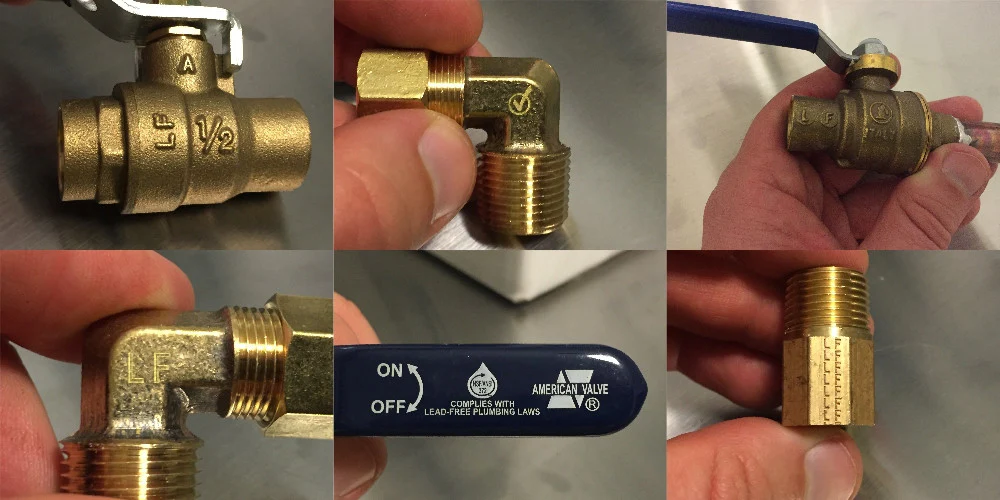In a significant move to protect public health, the European Union has recently enacted a new law aimed at reducing lead levels in drinking water. This regulation marks a crucial step in the EU’s ongoing efforts to safeguard citizens from the harmful effects of lead contamination. With tighter restrictions and more stringent requirements, the new law is set to have a profound impact on both water suppliers and consumers across Europe.
Importance of the Regulation
Lead is a toxic metal that poses serious health risks, particularly to children and pregnant women. By doing so, the regulation aims to prevent lead-related health issues and improve overall public health.

Background on Lead Contamination
What is Lead and How Does it Contaminate Drinking Water?
Lead is a heavy metal that can enter drinking water through various means, including corroded pipes and plumbing fixtures. When water comes into contact with lead-containing materials, such as old pipes or solder, it can become contaminated. This is particularly concerning in older buildings where lead plumbing was once common.
Health Risks Associated with Lead Exposure
Exposure to lead can have severe health consequences, particularly for vulnerable populations. In children, lead exposure can lead to developmental delays, learning difficulties, and behavioral problems. For adults, it can increase the risk of high blood pressure, kidney damage, and reproductive issues. The new EU law seeks to mitigate these risks by reducing lead levels in drinking water.
Historical Context

Lead-free copper pipe fittings production standards
Previous EU Regulations on Lead in Drinking Water
Before the introduction of the new law, the EU had existing regulations governing lead levels in drinking water. However, these regulations were deemed insufficient to address the growing concerns about lead contamination. The previous limits and requirements were revised to reflect the latest scientific research and health recommendations.
How the New Law Builds on Previous Legislation
The new law represents a significant upgrade from previous regulations. It introduces lower lead concentration limits, mandates more frequent testing, and places greater responsibility on water suppliers and homeowners. By building on past legislation, the new law aims to provide more effective protection against lead contamination.
Key Provisions of the New Law
Updated Lead Concentration Limits
One of the most notable changes in the new law is the reduction in the allowable lead concentration in drinking water. The updated limits are designed to further minimize health risks and ensure that water quality meets the highest standards.
Requirements for Water Suppliers
Water suppliers are now required to implement more rigorous testing procedures and take immediate action if lead levels exceed the new limits. This includes upgrading infrastructure and ensuring that lead contamination sources are identified and addressed promptly.
Homeowners’ Responsibilities
The new law provides guidelines for testing household water and offers recommendations for mitigating lead exposure.
Implementation Timeline
Key Dates and Deadlines
The new law comes with a clear timeline for implementation. Water suppliers and homeowners will need to adhere to specific deadlines for compliance, including the completion of infrastructure upgrades and the commencement of regular testing.
Transitional Arrangements for Compliance
To facilitate a smooth transition, the law includes provisions for transitional arrangements. These arrangements allow water suppliers and homeowners to gradually adapt to the new requirements without facing immediate penalties.
Impact on Water Suppliers
Changes in Water Testing Procedures
Water suppliers will need to adopt new testing procedures to comply with the updated regulations. This includes more frequent and comprehensive testing to ensure that lead levels are consistently within safe limits.
Financial Implications for Water Providers
Investments in infrastructure upgrades, testing equipment, and staff training will be necessary to meet the new requirements.
Infrastructure Upgrades Required
In many cases, water suppliers will need to replace or rehabilitate old plumbing systems and fixtures to reduce lead contamination. These infrastructure upgrades are crucial for ensuring long-term compliance with the new regulations.
Impact on Homeowners and Consumers
Steps to Ensure Compliance at Home
Homeowners can take several steps to ensure their drinking water meets the new standards. This includes testing their water, replacing lead-containing fixtures, and using water filters certified to remove lead.
How to Check Lead Levels in Household Water

Testing kits are available for homeowners to check lead levels in their water.
Public Health Benefits
Expected Reduction in Lead-Related Health Issues
By lowering lead levels in drinking water, the regulation aims to protect vulnerable populations and improve overall public health.
Long-Term Health Benefits for Communities
Reduced lead exposure will contribute to better health outcomes and a higher quality of life for residents.
Case Studies and Examples
Success Stories from Early Adopters
Several countries and regions have already implemented similar measures with success. These case studies highlight the positive impact of stringent lead regulations and provide valuable insights for the EU’s new law.
Lessons Learned from Other Countries
By examining the experiences of other countries, the EU can draw lessons on best practices and potential challenges. This information will be crucial for ensuring the successful implementation of the new regulations.
Challenges and Criticisms
Potential Obstacles to Implementation
Despite the benefits, there are challenges to implementing the new law. These include the costs of infrastructure upgrades, potential resistance from stakeholders, and the need for effective enforcement.
Criticisms from Various Stakeholders
Some stakeholders have expressed concerns about the new regulations, citing potential financial burdens and practical difficulties. Addressing these criticisms will be important for achieving broad support and successful implementation.
Future Developments
Ongoing Monitoring and Evaluation
This ongoing assessment will help identify areas for improvement and ensure that the regulation continues to meet its goals.
Potential Amendments and Updates to the Law
As new information and technologies emerge, the law may be amended to address evolving challenges and opportunities. Staying informed about potential updates will be important for all stakeholders.
Conclusion
Summary of Key Points
The new EU law on lead in drinking water represents a significant advancement in public health protection. With lower lead concentration limits, enhanced testing requirements, and increased responsibilities for both water suppliers and homeowners, the regulation aims to reduce lead exposure and improve water quality across Europe.
Final Thoughts on the New EU Law
As Europe moves forward with these new regulations, the focus will be on effective implementation and ongoing evaluation. By working together, water suppliers, homeowners, and policymakers can ensure that the benefits of the new law are fully realized and that public health is safeguarded.
FAQs
What should homeowners do if their water exceeds the lead limit?
Homeowners should immediately contact their water supplier and consider using a certified water filter to reduce lead levels. It’s also important to replace any lead-containing plumbing fixtures.
How frequently will water testing be required?
Water suppliers will need to conduct more frequent testing under the new law.
What are the penalties for non-compliance?
Penalties for non-compliance can include fines and legal actions. Water suppliers must adhere to the new regulations to avoid these penalties and ensure safe drinking water.
How does the new law affect private well owners?
While the law primarily targets public water suppliers, private well owners should also ensure their water quality meets safety standards.
Where can I find more information about the new regulations?
Detailed information about the new regulations can be found on official EU websites and from local water authorities. Homeowners and water suppliers should consult these resources for guidance and support.